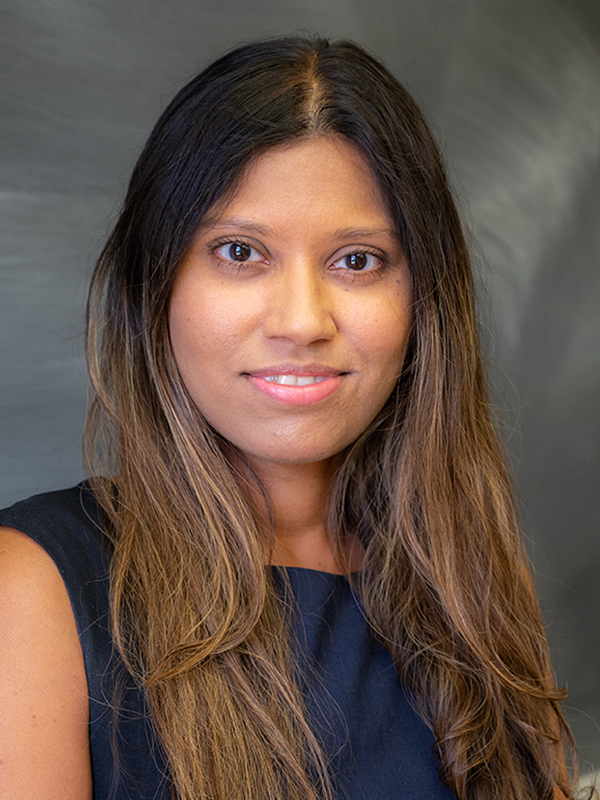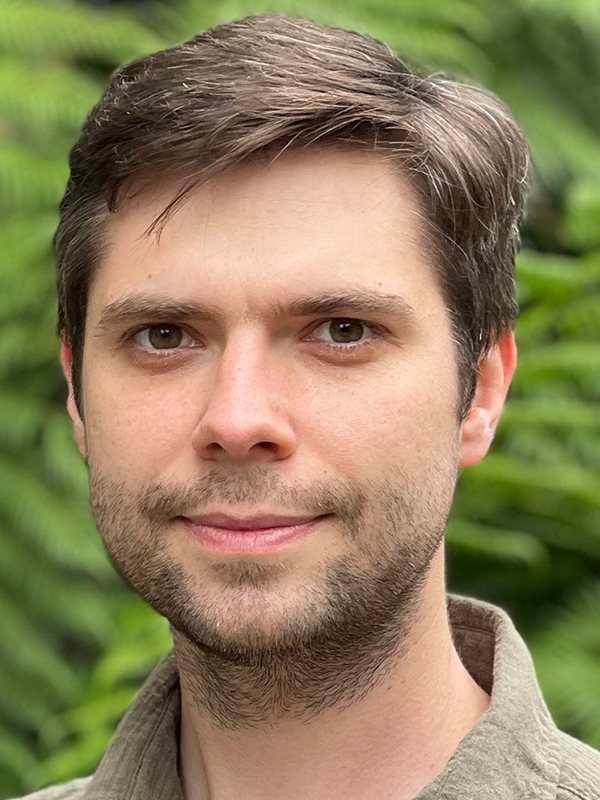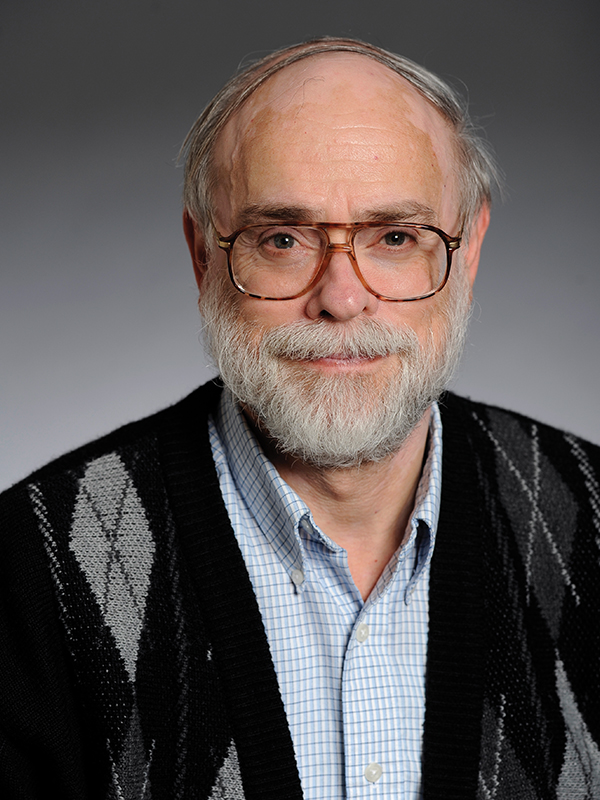
New
Faculty

Valentina Dutta
Valentina Dutta joined the Department of Physics as an assistant professor in 2022. Her research focuses on the search for new physics beyond the Standard Model of particle physics. She’s interested in utilizing the latest techniques in machine learning to improve sensitivity toward new physics that may be otherwise uniquely challenging to measure via experimental engagement. Dutta has worked on searches for supersymmetry with the Compact Muon Solenoid experiment, and she’s a member of a collaboration working on the proposed Light Dark Matter Experiment, which aims to search for dark matter in the sub-GeV mass range.
After receiving her Ph.D. from Massachusetts Institute of Technology, Dutta did postdoctoral work at the University of California, Santa Barbara, where she worked for an additional two years as an assistant project scientist.

vladyslav kozii
Vladyslav Kozii joined the Department of Physics as an assistant professor in 2022. His research interests span topics in condensed matter physics, with an emphasis on topological or otherwise exotic superconductivity and strongly interacting topological systems. Recently, his efforts focus on the microscopic origin and novel properties of topological superconductors, transport and optical properties of interacting topological materials, and hydrodynamics of electrons. In his work, Kozii aims to address questions of both fundamental and experimental significance.
Kozii earned his master’s degree from the Moscow Institute of Physics and his Ph.D. from Massachusetts Institute of Technology (MIT.) He was a postdoctoral associate in materials sciences at the Lawrence Berkeley National Laboratory/Department of Physics, University of California, Berkeley.

Grigory tarnopolskiy
Grigory Tarnopolskiy joined the Department of Physics as an assistant professor in 2021. His research interests span a variety of problems in high energy physics theory and condensed matter physics theory. His current research focuses on two major topics: twistronics and critical phenomena. Twistronics includes understanding physical properties of different Moiré superlattices, particularly twisted bilayer or multilayer graphene. Tarnopolskiy’s recent research on critical phenomena focused on the Sachdev-Ye-Kitaev model and other related systems.
Tarnopolskiy earned his master’s degree from the Moscow Institute of Physics and Technology and his Ph.D. from Princeton University. He was a postdoctoral Fellow at Harvard University.
Retired
Faculty

Steve Garoff
Physics Professor Steve Garoff is an award-winning advisor and teacher. But recently he’s been learning a thing or two from his twin grandsons.
During the height of the COVID-19 pandemic, Garoff began weekly Zoom meetings with the now-13-year-olds to discuss what’s exciting about science. They talk about physics or discuss the Physiology Nobel Prize or look at images from the James Webb telescope.
“I’m so impressed — and often stumped — by the questions these young men ask,” Garoff said. “They’ve renewed my enthusiasm for science. It’s the best new thing I do.”
Garoff retired in January 2021, giving him more time to spend with his grandsons, daughter, son-in-law and wife of 47 years. He hasn’t slowed down much, though. He’s advising five graduate students, teaching undergraduates, serving as vice chair of the University Research Council and conducting research, including an experiment with the European Space Agency.
Garoff joined the Carnegie Mellon faculty in 1988 after a career in industry. His research, which examines the physical properties of the interfacial regions between liquids and other liquids or solids, has broad impacts on a number of fields including health care and materials science. As a soft condensed matter physicist, he conducts research at the border of applied physics and engineering, leading to extensive collaborations with faculty — and to advising many students — in Carnegie Mellon’s Department of Chemical Engineering, where he holds a courtesy appointment.
“The focus of my research makes collaboration natural, but Carnegie Mellon made it more than possible. It made it easy,” Garoff said.
For Garoff, some of his fondest memories come from teaching and interacting with students.
“The very best days in my entire career are graduation days and thesis defense days,” he said. “I feel such a sense of pride. It’s just amazing.”
He has mentored nearly 50 Ph.D. students, master’s students and postdocs and supervised more than 100 undergraduate research projects. For 26 straight years he taught Modern Physics Laboratory, the junior-level physics course. Garoff has been heavily involved in many aspects of undergraduate education in the Department of Physics from the very beginning, including during his tenure as associate department head and department head.
“I was very lucky. I really got to know almost all physics majors pretty darn well,” said Garoff, whose dedication to undergraduate education was recognized with the university’s Academic Advising Award and MCS’s Richard Moore Award.
Garoff credits his Ph.D. thesis advisor’s thesis advisor, David Turnbull, for inspiring him to become a teacher.
“He taught me that the real payoff is not so much in the science that you do but in the young people you help to become future scientists and citizens,” he said.
As he looks back on his career, Garoff knows that Turnbull was right. When he bumps into an alumnus on campus or sits down to dinner with alumni at an event, he finds so much joy in catching up and reminiscing.
“I’m so lucky to know these incredible people who span my career,” Garoff said. “I can’t imagine anyone on this earth having a better job than I’ve had here.”
■ Amy Pavlak Laird

Brian Quinn
Brian Quinn liked to impress (or scare, depending on who you ask) the denizens of the lower floors of Wean Hall by regaling them with tales of the 48-ton hadron calorimeter he and his colleagues were building above their heads on the eighth floor. In fairness, the calorimeter was built in pieces on Carnegie Mellon’s campus, but impressive nonetheless.
Quinn, like most particle physicists, uses huge pieces of equipment to study the tiniest of subatomic particles. The calorimeter, for example, was built for the GMn experiment at the Thomas Jefferson National Accelerator Facility (JLab), designed to measure the magnetic form-factor of the neutron. Quinn proposed the idea for the experiment in 2010 and finally saw it come to fruition in early 2022, just as he was set to retire.
“For the experiment we had to build a new spectrometer — the Super-Bigbyte Spectrometer — and the new hadron calorimeter, and we repurposed a giant magnet from Brookhaven,” said Quinn, emeritus professor of physics. “It was kind of cool to see it all come together.”
Quinn, who joined the medium-energy physics group at Carnegie Mellon in 1984, has been a part of several big experiments during his career. At Brookhaven National Lab he conducted hyper-nuclear decay experiments and experiments searching for the H-particle (6-quark di-baryon). At the Low Energy Antiproton Ring at CERN, he worked on antiproton annihilation experiments, on what Quinn calls a little tabletop experiment.
“I thought it was a very cute experiment,” Quinn said. “It was one that could literally be mounted on a table — well, a big table. One grad student could roll the whole experiment around.”
Most of Quinn’s work since then has been at JLab, primarily on experiments focused on parity violation. He measured the weak interaction between the electron and proton or neutron, an interaction that violates parity. He participated in the G0 and HAPPEX-3 experiments and in the PREX experiment, which uses the weak force to probe the distribution of “invisible” neutrons in 208Pb, in effect measuring the thickness of the neutron-skin outside the proton-distribution in lead.
“Parity violating experiments are very fiddly experiments in terms of the quality of the data and the quality of the systematic control,” Quinn said. “They’re hard, and they’re cutting edge, and I’m very proud of our work on these experiments.”
Another of Quinn’s greatest points of pride is his graduate students. He mentored six Ph.D. students, who have gone on to very successful careers of their own including head of the Physics Division at Los Alamos National Laboratory and professors at the University of Virginia and the High Energy Accelerator Research Organization in Japan. He also taught a wide variety of courses, including Physics 3, in which he introduced students to special relativity, general relativity and quantum mechanics.
“My favorite memory of those courses was being able to blow young minds by showing them how physics could be so counter-intuitive, but still be perfectly consistent,” he said.
Quinn is keeping tabs on ongoing particle physics experiments but is happy not to be manning them himself. In retirement, instead of putting in round-the-clock shifts at JLab, he hopes to travel the world with his wife, Sandy. They have plans to snorkel and ski, with Quinn doing a little SCUBA diving when he gets the chance.
■ Amy Pavlak Laird
